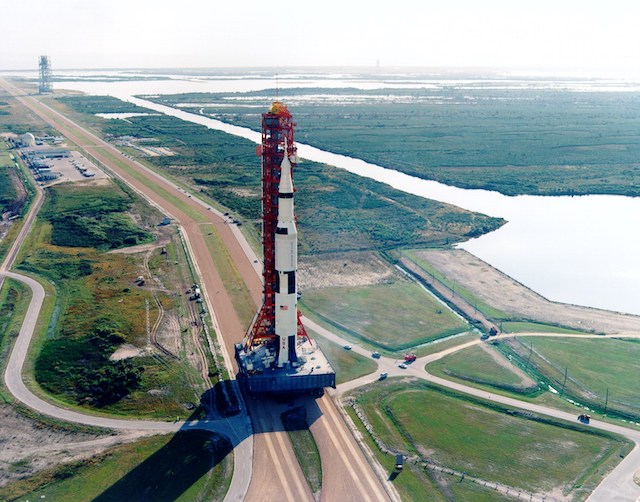I’ve been listening the BBC World Service’s podcast ’13 Minutes to the Moon’ about the Apollo space programme. Last night I listened to the episode about Apollo 8, the perhaps forgotten daring mission that enabled the moon landings to happen. I woke up this morning thinking just what an incredible achievement it was.
Missions one to seven took place in Earth orbit. With mission eight, NASA took the step of taking a space craft out of Earth orbit, crossing the 250,000 miles to the moon and inserting it into lunar orbit. The mathematics and the engineering needed to hit the exact spot in space to enter lunar orbit was a huge leap at that time. The mission was all the more nerve-wrecking for the critical manoeuvre had to take place out of radio contact on the dark side of the moon.
I was moved to tears when I heard the archive that captures the moment when the team at Mission Control first heard back from the astronauts as they re-appeared from the far side of the moon, safefy in lunar orbit. It is hard to comprehend what an incredible feat of human ingenuity and achievement that was in 1968.
Tiny Computer SatNav
Another astonishing first for this mission was that the Apollo 8 capsule was the first flying craft to be contolled by computer. Regular readers of this blog will know that I have a philosophical objection to modern satnavs. But the complex maths needed to track position and control trajectory and speed left little choice but to rely on a computer. However, at the time that the programme was started, computers of this power were the size of buildings.
The women and men tasked with this huge technological challenge managed to create the world’s first programmable computer, and managed to get it down to the size of a shoebox. The women and men tasked with this huge challenge had to invent software, an ingenious form of woven memory that was actually stitched into the core and a computer language and user interface that would allow the astronauts to give the computer instructions.
What’s mind blowing is that the first use of this technology wasn’t a relatively benign journey like a trip to the supermarket. It was governing the life critical pathway of the first ever human trip to the moon.
All this with 15bit
I can’t help but feel inadequate when I realise that my phone has 2Gb of onboard memory. The lunar capsule’s onboard memory had just 15bits and look at where it got them. With my 2 gigabytes, all I do is send emails and surf the web.
I see it as an extreme illustration of the Marghertia Principle in action, that you get the most out of the thing that is first on the menu. And it is a good reminder that we don’t need so much of the technology that we think we have become used to. The irony is that the Apollo mission spurned the development of the microprocessing industry that makes the phones in our pockets and the wearable computers on our arms possible.
My concluding thoughts: Are you going to the moon? Do you need a computer to get there?


Leave a Reply